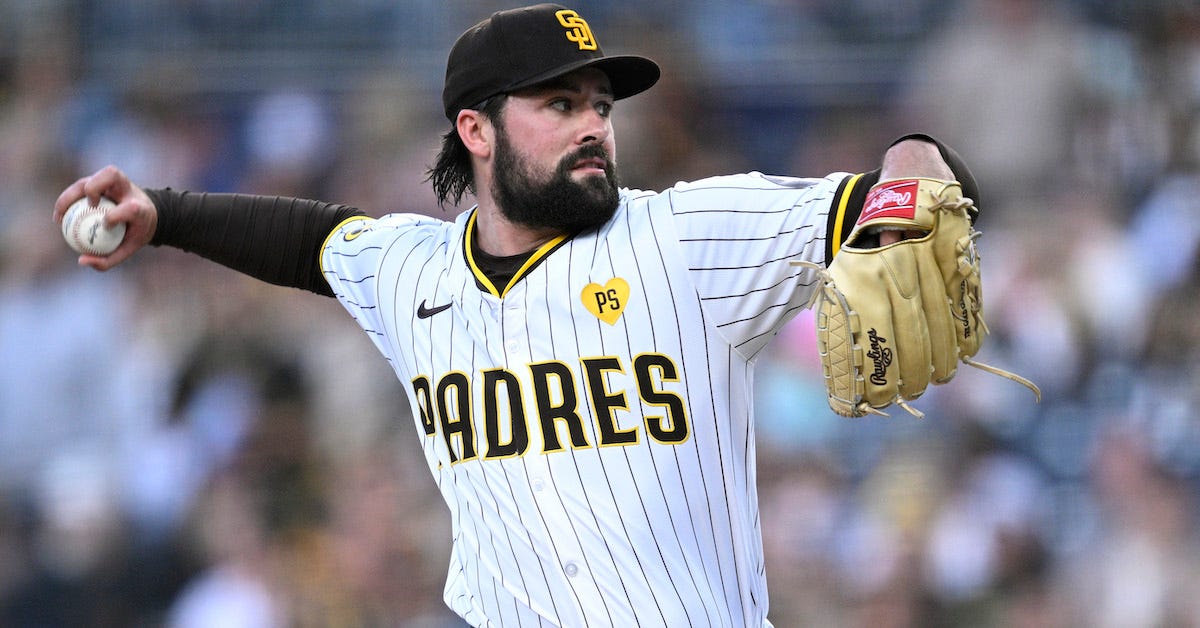An ode to Matt Waldron, the MLB's lone knuckleballer
In an era dominated by high velocity and power pitching, Matt Waldron’s knuckleball stands out as a testament to the art of deception and finesse.
The Art of the Knuckleball:
The knuckleball is a special pitch. It can take on the shape of any pitch, making it a true shape-shifter. Like Beast from Teen Titans or Morph from the X-Men, a knuckleball can take on any form. Want it to dive to the bottom of the zone like a curveball? It can do that. Need it to run in on a hitter like a cutter? No problem. It can slide like a slider or sweep like a sweeper. That’s the beauty of the pitch. It achieves this with little to no spin, causing erratic and unpredictable movement. It's a pitch that relies on finesse and finger pressure rather than raw power.
Well, usually.
One of the main reasons Matt Waldron’s knuckleball is so special is his ability to throw it hard. In fact, he holds the record for the fastest knuckleball in the Baseball Savant database. His 0-2 strikeout pitch to Jazz Chisholm last week, was recorded at 84 mph.
Another reason Waldron is succeeding as a knuckleball pitcher is that the pitch isn’t just a gimmick for him. He actually has effective secondary pitches. This is extremely rare; in fact, no knuckleballer has thrown the pitch less than 59% of the time. Matt Waldron is throwing it just 26.7%.
Here are some of my favorite knuckleballs from him this year.
Matt Waldron’s knuckleball a video showcase:
1. The Freezer
2. LMAO
Tunneling and Secondary Offerings
Waldron’s success is further amplified by his secondary offerings, which include a four-seam fastball, a sweeper, a sinker, and a cutter. These pitches not only provide him with options but also play a crucial role in his overall strategy through the concept of tunneling.
Tunneling refers to the ability of a pitcher to throw different types of pitches that follow a similar initial trajectory out of the hand, making it difficult for hitters to distinguish between them until it’s too late. By the time the batter realizes what type of pitch it is, the ball is already moving in a way that makes it difficult to adjust.
His sweeper is probably is best secondary, with a horizontal break of -14.2 inches, the pitch complements his knuckleball by providing lateral movement, confusing hitters who are already dealing with the knuckleball’s unpredictable path.
A critical aspect of Waldron’s effectiveness is his consistent release points. As seen in the player card graphic below by Thomas Nestico (TJStats), all of his pitches, whether a knuckleball, fastball, sweeper, sinker, or cutter, originate from the same vicinity. This consistency in release points is essential for tunneling, as it makes it exceedingly difficult for hitters to pick up the type of pitch based on the release point alone.
The Impact of Location
Waldron’s command of pitch location is another vital factor. He consistently keeps the ball low in the zone, which is effective for inducing weak contact and ground balls. His knuckleball, combined with secondary pitches that have varying movement profiles, creates a dynamic and unpredictable pitching repertoire.
Matt Waldron's knuckleball is a refreshing anomaly in today's game. As the lone knuckleballer in the MLB, Waldron isn’t just keeping the spirit of this pitch alive. He is revolutionizing it.






